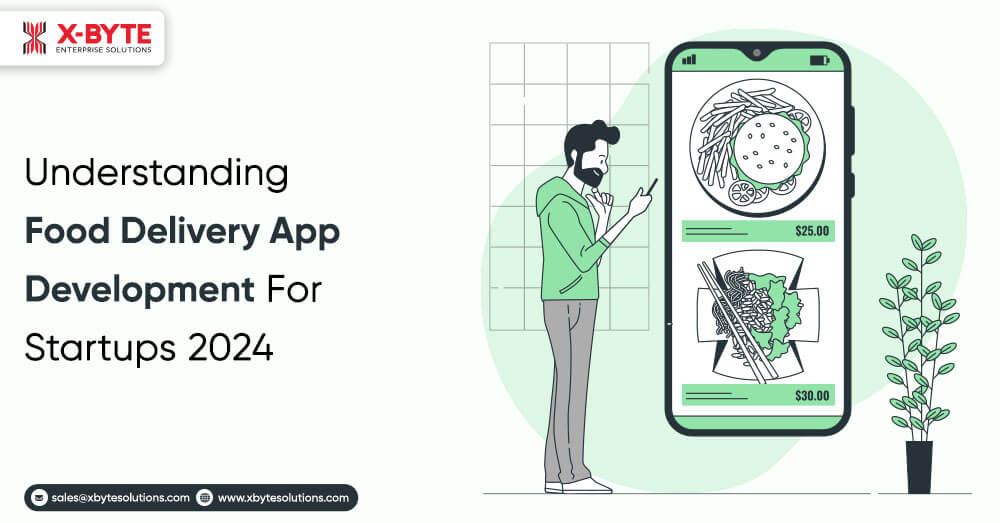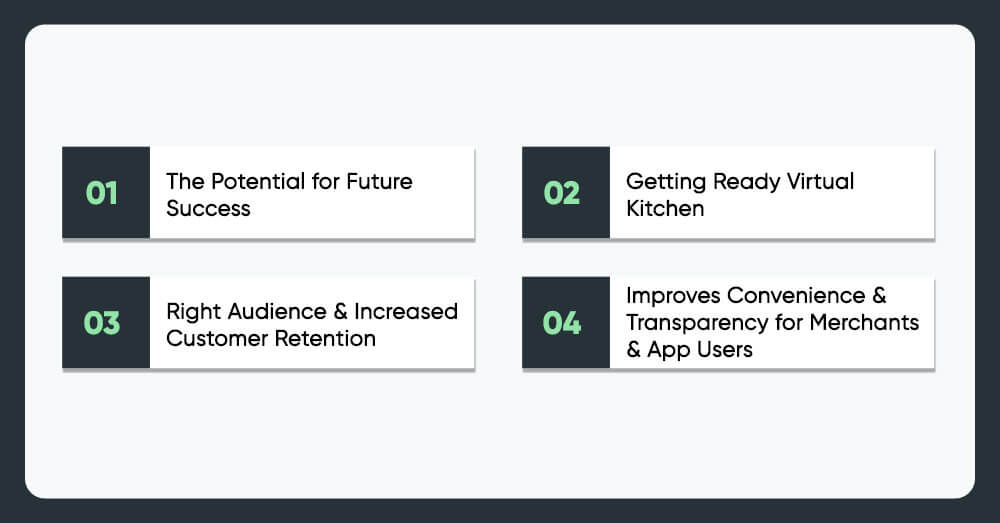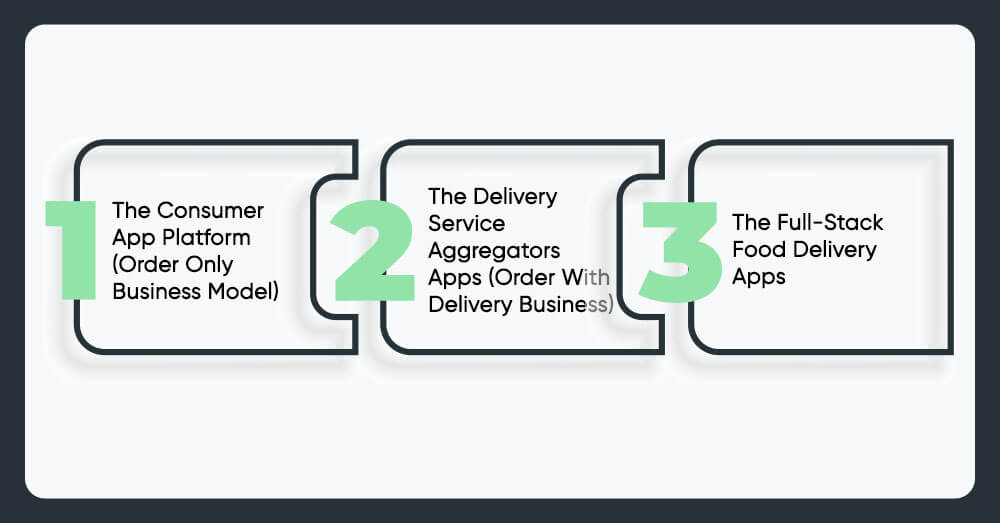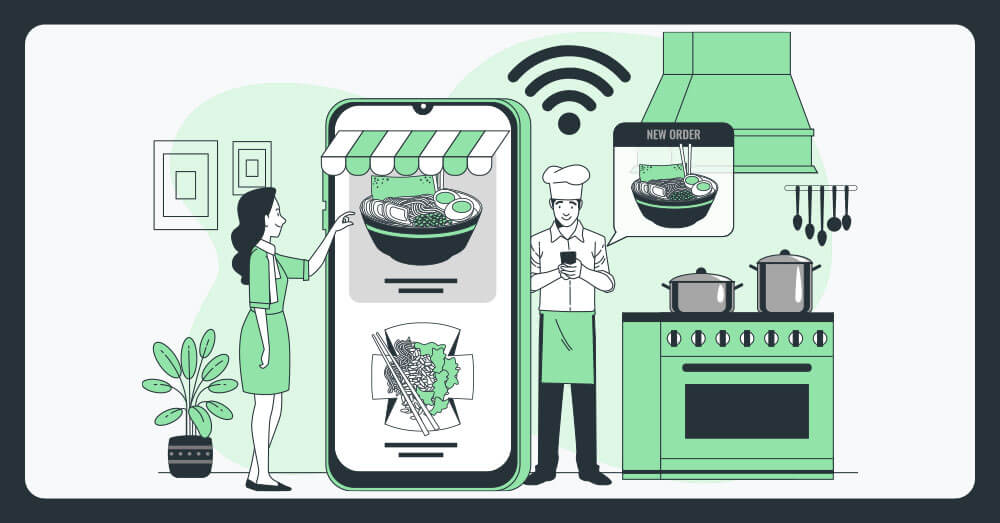-
solutinos
-
Hire
Frontend Developer
Backend Developer
-
NodeJS Developer
-
Java Developer
-
Django Developer
-
Spring Boot Developer
-
Python Developer
-
Golang Developer
-
Ruby on Rails Developer
-
Laravel Developer
-
.NET Developer
Technology
-
Flutter Developer
-
React Native Developer
-
Xamarin Developer
-
Kotlin Developer
-
Cross-Platform Developer
-
Swift Developer
-
MongoDB Developer
-
C Developer
-
Smart Contract Developers
Cloud
-
-
Services
Mobile Development
Web Development
- Work
-
Multi Services App
-
Food Delivery App
-
Grocery Delivery App
-
Taxi Cab Booking App
-
Multi Services App
-
OTT Platform APP
-
Social Media APP
-
Freelance Service App
-
Car Rental App
-
Medicine Delivery App
-
Liquor Delivery App
-
Sports Betting App
-
Online Coupon App
-
eLearning App
-
Logistics & Transportation App
-
Courier Delivery App
-
On-Demand Real Estate App
-
E-Wallet APP
-
Online Dating App
-
Handyman Services App
-
-
Process
-
Company

Over the last few years, door-to-door delivery services have grown. It reveals new aspects by analyzing smartphone users, internet connectivity, and IT enforcement in the industry. In this industrial sector, food delivery applications are getting increasingly popular. With increasing demand for online food delivery and business prospects in this area, now is an excellent moment to develop a food delivery app.
Do you want to learn how to design a food delivery app? Understanding market tactics, technology, and app development costs is critical to creating a successful food delivery app .
Some of the most critical elements influencing the cost of developing a food delivery application include:
- The app's design, level, features, and functionality are complex and sophisticated.
- The quantity of third-party plugins included in the app to boost user engagement.
- The software will operate on one of three platforms: Android, iOS, or cross-platform.
- The level and frequency of regular maintenance and upgrades necessary to guarantee optimal app operation.
- The location of the selected food delivery mobile app development business. For example, developers in the United States or the United Kingdom charge a stunning $90-$110 per hour.
- Still, developers in India usually offer a more affordable fee, ranging from $20 to $70 per hour.
What Is A Food Ordering And Delivery App?
A food ordering and delivery application is a smartphone app that allows consumers to browse menus, place orders, and pay for food products at various restaurants or joints. A food app often offers recommendations, ratings, and reviews from users to aid users in making wise choices. The app tells the restaurant or delivery partner when the customer places the order. The food is then picked up by the restaurant's delivery team and delivered to the customer's location.
For assistance in creating a restaurant food delivery app, you may work with a food delivery app developer. You can collaborate with outside food delivery aggregators if you can't afford it. Food delivery apps are a kind of takeout and delivery software that links customers with nearby eateries, supermarkets, convenience stores, and other businesses by giving them an easy method to purchase food that will be delivered right to their door. Software for takeout and delivery from restaurants gives users more control over the delivery process.Customers can specify the time and location of product delivery and follow the whole delivery process.
Food delivery apps are smartphone applications that showcase menu items and food choices from restaurants or merchants. Customers may purchase food and deliver it right to their door through these third-party delivery services.
The Statistics of On-demand Food Delivery App Development Services
- According to a Grubhub and Technomic report, 90% of customers want to increase their usage of food delivery services in the future.
- Grand View Research indicates that between 2022 and 2028, the worldwide market for online food delivery will grow at a pace of over 11% per year. By 2028, it will have surpassed $388 billion, and the Asia Pacific area will have contributed significantly to this expansion.
- It's also important to note that most food delivery businesses comprise platform-to-consumer deliveries. It made up almost 60% in 2021 and had a big effect on the market's growth as a whole. The restaurant-to-consumer market, which is expected to grow by 11.2% between 2022 and 2028, also impacts the food delivery sector.
- A report from Statista predicts that by 2025, the global online food delivery market will generate US$449,292 million and US$45,332 million in the US. By 2022, sales of online food delivery services are expected to increase 12.2 percent in the US.
Two separate types are used to classify this data:
- By 2025, there will likely be 2,114.3 million customers in the Platform-to-Consumer Delivery market. Additionally, a projected annual growth rate (CAGR 2021–2025) of 9.37% is anticipated for the revenue, translating into a predicted market volume of US$247,428 million by 2025.
- By 2025, there will likely be 1,845.2 million users in the restaurant-to-consumer delivery market. Additionally, a 10.82% annual growth rate (CAGR 2021–2025) in revenue is anticipated, translating into a predicted market volume of US$201,864 million by 2025.
Why is On-Demand Food Delivery App Development Necessary?

Apps for online food delivery have fundamentally altered people's daily lives. Food delivery app development makes it convenient for customers to sample food from their preferred hotels or restaurants from any location. As a result, these applications provide profitable chances for travelers, lodging establishments, and eateries.
- The Potential for Future Success
Did you know that in 2022, food delivery apps like DoorDash brought in over $6.58 billion, a 34% increase over the previous year? This income figure is still growing, with 25 countries and 32 million monthly subscribers.
The market for online food delivery apps is expanding steadily, with projections showing that it will reach 1.4 trillion dollars by 2027 from 770 billion dollars in 2022.
- Getting Ready Virtual Kitchen
The development of an on-demand food delivery app offers your company a unique opportunity to build virtual restaurants. Businesses focus only on developing smooth food delivery methods to acquire potential clients via online food delivery. The feature-rich food delivery app development services provides
- Right Audience & Increased Customer Retention
Using a food delivery app, you can communicate with your clients via email, text, or push alerts. You may inform them about current promotions, the newest discounts, and loyalty programs. By utilizing the widespread use of mobile devices, you will also be able to expand your business's reach and establish a more noticeable brand presence.Using a tailored app to target the proper audience is crucial if you want amazing outcomes quickly.
Reaching the target market will assist your company greatly. A mobile application that can reach millions of individuals genuinely wanting restaurant or delivery services is crucial to driving the target market. You may accomplish it without difficulty with the aid of the mobile application. You will also be able to stay in touch with your users. In your target market, client happiness is crucial.Furthermore, offering ongoing specials and discounts might encourage long-term user retention.
- Improves Convenience & Transparency for Merchants & App Users
Although the online food delivery app development services have grown significantly in recent years, the industry has matured due to widespread funding and technological adoption. But the story doesn't end here. Increasing convenience and transparency for both consumers and businesses is another important motivator.
For both app users and retailers, the on-demand options for the food delivery app offer transparency and convenience. Because the on-demand food delivery business has been growing over the past few years, it is crucial to establish a customized mobile application if you intend to produce one.
On-Demand Delivery Application and Business Models

The three primary categories of on-demand food delivery application development that are currently quite popular are as follows. They fall under one of the following categories:
- The Consumer App Platform (Order Only Business Model)
This is a sensible business plan, particularly for inexperienced gamers. This allows the proprietors of the program to link customers to several restaurants and diners at the same time. Put differently, app developers can offer a venue where different restaurants can register and offer their patrons food delivery services.But this is an order-only business strategy.
In this case, delivering food to patrons is the duty of the restaurant's delivery service or a contracted outside courier service provider. Because the owner of the food delivery app is not in charge of logistics.
This company model's primary benefit is its low capital investment needs.Owners of businesses might begin with the trim level and add additional restaurants progressively. Furthermore, the owner is spared the inconveniences of cooking and serving food.
How Do These Apps Work?
This platform operates in a fairly straightforward manner and involves the following steps:
- Menus may be seen and ordered by app users.
- The restaurant sends the client a confirmation message once the order is placed.
- The restaurant's delivery person brings the requested item right up to the customer's door.
- If there is an issue, the courierboy can contact the customer directly to schedule delivery.
- Typically, app developers charge the restaurant a set fee for each order placed using their app.
The Limitations Of These Apps For Food Delivery
- This business strategy limits the culinary selections available. This is due to the app's limited listing of only food suitable for restaurant cooking.
- Furthermore, the quality of the food and packaging are outside the control of the app owners.
- It may become difficult for the app owners to keep users if they are dissatisfied with the food's quality.
- The most excellent strategy to overcome these restrictions is to use proactive PR efforts to target eateries and attract new clients.
- It might also be beneficial to create a loyalty program to retain customers.
- The Delivery Service Aggregators Apps (Order With Delivery Business)
This model is almost the same as the business model stated above, with the difference that it also manages logistics. As a result, the application owner grants the end user's request and sends food.
This idea is financially feasible since the restaurant doesn't have to maintain its fleet. It also enables you to utilize the existing user base for your application. Furthermore, under this arrangement, app developers frequently work with various independent courier firms to deliver food directly to the customer's door.
How Do These Applications Work?
The following actions are involved in this model's operation:
- Menus may be seen and ordered by app users.
- After receiving the order, the restaurant notifies the client.
- The restaurant contacts the courier network as soon as the order is prepared.
- The requested item will be picked up and delivered to the pickup location by the closest delivery driver.
- Shipping costs will be assessed to clients based on their distance.
According to this business plan, the restaurant may be charged a fixed price per order by the app management, and customers can be charged a delivery cost determined by their precise location. The well-known app Grubhub, which has successfully made good money in the USA, has a similar business strategy.
And The Limitations Of Such Food Delivery Apps
- Building an effective and quick transport fleet is one of the main issues facing food delivery companies using such platforms.
- In addition to having proper training, the delivery staff must have enough speed to deliver goods on schedule. Inadequate consumer satisfaction and a worse user experience might arise from delays.
- Delivery on schedule is crucial, particularly during lunch. This is because most office workers are only available at lunch.
- Thus, more shipping staff should be recruited to cover a greater region to resolve this issue.
- The Full-Stack Food Delivery Apps
As the name implies, this business model involves a single service provider serving the entire food chain. In other words, everything is handled by one party, from preparing the cuisine to delivering it right to the customer's door. This business strategy substantially differs from the other two and necessitates a significant financial commitment. Usually, well-known eateries that develop takeout and delivery applications opt for this business model to provide their loyal clients with extra benefits. This increases sales by enabling clients to order food while lounging in the comfort of their own homes. The most well-known illustration would be Domino's Pizza.
Then some business owners even use cloud kitchens or ghosts to cook food. After that, you decide on the cloud kitchen business model and start serving food to clients under your own brand. In this instance, though, the restaurant does not provide a food option. All you have to do is deliver the food to your clients after accepting orders on the site.
How Do These Apps Work?
- Menus are viewable and orderable through the app for customers.
- After receiving the order, the restaurant notifies the client.
- The restaurant courier brings the food to the customer's front after finishing the order.
Limitations of Food Delivery Apps
- Cost is the main issue with this application business model. Because only one service provider can handle all food preparation and delivery elements, this necessitates a significant upfront financial commitment.
- Additionally, even when costs are considered, it can be difficult for restaurants with a poor reputation in the community to draw in and keep new patrons.
- Finally, because courier expenses are so expensive, this business model lowers the profitability of many firms. Securing the appropriate funding is the best solution to this issue.
- You must have a fantastic presentation ready to draw in investors. It is now much more straightforward to provide our consumers with superior service.
What makes this model so appealing?
All food delivery app development companies provide an integrated delivery service business model. For those who own applications, the platform presents a more lucrative opportunity. They may easily impose a fixed fee on their restaurant partners for all orders made via the app. Moreover, a delivery cost could be assessed depending on the customer's region. Some restaurants, however, favor this business model since it eliminates the need for them to manage logistics. The proprietor of the program manages all courier services under this business model. Thus, the restaurant's only responsibility is to prepare the cuisine; another party takes all other logistics.
Essential Elements & Features Development of Food Delivery Apps
One should know that developing a bespoke food delivery application involves developing a sophisticated software solution. This platform caters to a variety of user categories. Therefore, the essential characteristics will vary correspondingly.
Consider who usually makes use of a food delivery app. You have probably come to the finding that they are:
- Restaurants that take orders
- Clients placing food orders
- Order-delivery couriers
- An app's administrator oversees all of the following procedures.
- Restaurant Applications

It is an app designed for a restaurant that delivers food. It includes several required features to ensure smooth delivery.
- Signup and Login
- Order processing &management
- Order transfer for delivery
- Reviews and Ratings
- Push notification
- Offers & Discounts
- Menu management
User Application
To create a food delivery app, you also need a client-facing application. Since it's where your clients will submit their orders, this part of your custom software is essential. Pay attention to its clever UX and user-friendliness to make the application convenient and exciting.
- Nearby Restaurants
- Social Media Login
- Push Notifications
- Ratings and Reviews
- Coupon Management
- inApp payments
- Tracking order
Admin Panel
The basis for controlling your food delivery app is an admin panel. The behavior of eateries, patrons, and couriers may all be seen by the administration.
- Admin Login
- Restaurant Management
- Payment Management
- Order Management
- Analytics Tools
Final Thoughts and Food Delivery App Development Cost
The following are some of the key variables that influence the cost of developing food delivery applications:
- The degree of complexity and refinement in the app's features, capabilities, and design.
- The quantity of third-party plugins that can be installed in the program to raise customer satisfaction.
- The intended operating system for the application be it cross-platform, iOS, or Android.
- The level and frequency of routine updates and maintenance needed to guarantee optimal app functioning.
- The chosen mobile app development company's geographic location. For example, developers in the US and the UK charge an astounding $90-$110 per hour, but developers in India usually charge $20–$70 per hour, which is more affordable.
X-Byte Enterprise Solution is dedicated to influencing the future of food delivery applications by using cutting-edge technology, developing creative solutions, gaining a thorough grasp of market dynamics, and staying ahead of industry trends. All you need to do is make sure the food is fresh and ready for delivery when it's time to be delivered since third-party applications handle the cost of delivery services, apps, etc.
So, if you want to build a food delivery app like KFC, Pizza Hut, or Domino's, don't be afraid to collaborate with us. Throughout the food delivery app development process, our knowledgeable staff will support you and help you grow your company.
Frequently Asked Questions
How do I make an app for food delivery?
You can make the feature-rich food delivery service app with 6 Simple Steps
- Validate Your Food Delivery App Idea
- Choose Your Food Delivery App Development Method
- Identify Your Food Delivery Business Model
- Select Your Features
- Design and Development
- Marketing and Launch
How much does it cost to create a food delivery app?
The cost to design an app for food delivery might be as little as $40k or as much as $300k. Creating an Android or iOS restaurant food delivery application might cost anywhere from $3000 to $15000 in India. The required features and functionalities will determine the pricing.
What features can be added to build a food delivery app?
Even while your app will have some functions that are shared by other delivery apps, make sure it has some unique features as well. Menu choices, home page personalization, app feature integrations, geolocation services, choices for customer ratings and reviews, several payment methods, and more are a few of these.
How much time does it take to make a food delivery app?
Developing an on-demand food delivery app typically takes two to four weeks.
However, this mostly relies on the app's complexity and feature needs.
How do I start an online food delivery business?
To start an online food delivery business, you need to follow the simple steps listed below:
- Choose the market segment.
- Recognize the food preferences of your customers.
- Determine your niche and finalize your offerings.
- Be updated with technological advancements.
- Analysis and Research on the Market.
- Employ trustworthy delivery personnel.
- Control your cash flow.
- Create your website or app.
- Select the appropriate model for online delivery.
